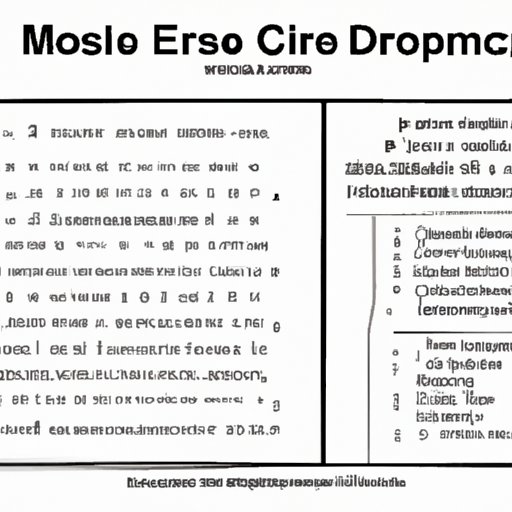Introduction
Morse code was developed in the early 1800s and was used extensively for telegraph communications until the 1960s. Although it is no longer the primary means of communication, it remains an important and useful skill to have. Not only does it serve as a backup method of communication, but it can also be used in situations where high levels of radio signal interference make voice communication unreliable. In this article, we will explore the basics of Morse code, essential tips and tricks for learning, and provide a step-by-step guide to proficiency.
The Basics of Morse Code
Morse code is a simplified form of communication that uses dots and dashes to represent letters and numbers. It can be transmitted using light, sound, or in some cases, by touch. Morse code was initially used to send messages over telegraph wires but has since been adapted for use in various other fields, including aviation, maritime, and amateur radio.
To understand Morse code, you need to become familiar with the International Morse Code chart. This chart is a standardized table that shows the Morse code symbols for all letters, numerals, and punctuation marks. Morse code works on the principle of timing – the length of the signal is used to distinguish between dots and dashes. Dots are typically shorter in duration and dashes longer in duration. To transmit a letter, you would use a combination of dots and dashes that corresponds to the symbol on the chart.
Essential Tips and Tricks for Learning Morse Code
Learning Morse code requires practice and dedication. Here are some essential tips and tricks to help you get started:
- Become familiar with the International Morse Code chart.
- Use practice exercises to build your skills gradually.
- Make use of resources for learning materials, such as online courses or apps.
- Develop effective study habits, such as setting aside dedicated time each day for practice.
- Stay motivated by setting achievable goals and focusing on your progress.
Creating a Step-by-Step Guide for Becoming Proficient in Morse Code
Here is a step-by-step guide to becoming proficient in Morse code:
- Start by learning the basic techniques, such as recognizing the Morse code chart and understanding the timing of signals.
- Gradually build up your skills by practicing common words and increasing the speed and complexity of your messages.
- Practice listening to Morse code signals at different speeds and increasing the time duration between signals.
- Remember to take breaks and not push yourself too hard.
Instructional Videos or Tutorials
To supplement your learning, check out these instructional videos that demonstrate Morse code in action and offer helpful tips:
Personal Narratives that Showcase Successful Learners
Reading about personal narratives of successful Morse code learners can be very motivating and enlightening. Here are a few examples:
- Bill Koch, an amateur radio operator, regularly participates in Morse code contests and is a recognized Morse code expert.
- Christine Skolmoski became interested in learning Morse code after struggling with communication during a disaster response mission. Since learning Morse code, she has become an advocate for the skill and promotes its importance to other disaster responders.
Practical Advice and Recommendations to Build Proficiency
Here are some practical advice and recommendations to help you build proficiency in Morse code skills:
- Find a study partner to practice with. This can be especially helpful when learning the timing of signals.
- Use flashcards to help with memorization.
- Practice regularly but in short bursts to stay motivated and avoid burnout.
- Pay attention to the rhythm and cadence of Morse code signals to distinguish differences between signals.
The History and Cultural Significance of Morse Code
The invention of Morse code was a significant development in the history of telecommunications. It facilitated rapid communication over long distances and paved the way for further technological innovations. Although Morse code is no longer the primary means of communication, it still holds cultural significance and is celebrated annually on April 27th, the birthday of Samuel Morse, the man who created Morse code.
Expert Tips and Insights
We spoke with Morse code experts and enthusiasts to get their insights on learning Morse code. Here are their tips:
- Start by learning the most common words in the English language.
- Use mnemonics to help with memorization.
- Get involved in your local amateur radio community, which might offer encouragement, volunteers, or resources for learning materials.
Conclusion
Learning Morse code may seem like an outdated skill, but it still holds value today. Whether you are an aviation enthusiast or prepping for a disaster response mission, having Morse code skills can be a lifesaver. By following the tips and tricks outlined in this article, you can build the proficiency needed to communicate through Morse code.
